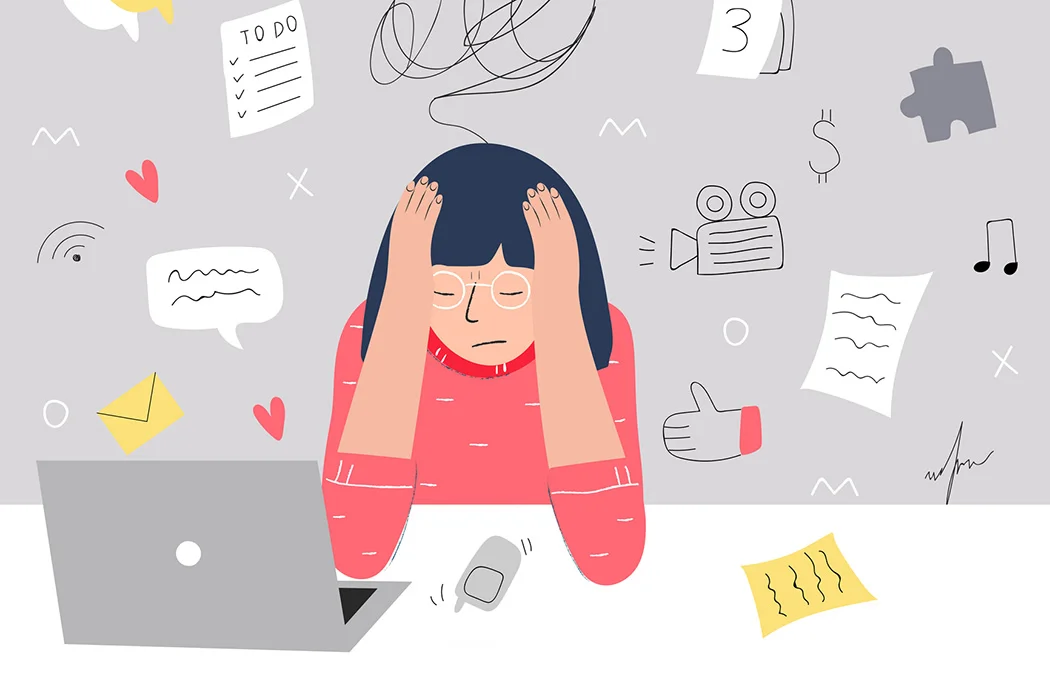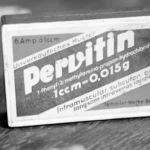Attention Deficit Hyperactivity Disorder (ADHD) is a common neurodevelopmental condition that affects how people think and behave. While stimulant medications were once the primary treatment, a broader range of options has emerged, encompassing behavioral interventions, alternative therapies, and a deeper understanding of the brain’s role in ADHD. This article explores the evolving landscape of ADHD treatment, delving into its history, controversies, and promising advancements.
Evolution of ADHD Treatments
Our understanding of ADHD has transformed significantly over time, leading to a more nuanced approach to treatment. From early reliance on stimulants to the exploration of non-medication therapies and the potential of cutting-edge research, the field of ADHD treatment continues to evolve.
The Early Days: Stimulants Take Center Stage
In the mid-20th century, stimulant medications, such as methylphenidate (Ritalin), emerged as the primary treatment for ADHD. These medications proved effective in improving focus, reducing hyperactivity, and enhancing impulse control for many individuals. However, this one-size-fits-all approach eventually gave way to a more personalized and multifaceted understanding of ADHD treatment.
Unlocking the Brain’s Secrets: A New Era of Understanding
Breakthroughs in neuropsychology revolutionized our understanding of ADHD. Scientists discovered that the condition is rooted in the brain’s wiring, particularly in the intricate interplay of neurochemicals and neural pathways. This newfound knowledge paved the way for more precise diagnoses and tailored treatment strategies.
Beyond the Pill: Expanding the Toolkit
While medication remains an essential tool in ADHD management, experts now recognize the importance of a multi-modal approach. Non-medication therapies have gained prominence, empowering individuals with practical skills and coping mechanisms. Some widely used therapies include:
| Treatment Approach | Description |
|---|---|
| Behavioral Therapy | This approach helps individuals modify behaviors, often through a system of rewards and consequences. It’s particularly helpful in managing impulsivity. |
| Cognitive Behavioral Therapy | CBT addresses thought patterns and how they influence feelings and behaviors. It equips individuals with coping mechanisms and problem-solving skills. |
| Social Skills Training | For those struggling with social interactions (a common challenge in ADHD), this training provides tools to navigate conversations, read social cues, and build relationships. |
The Future of ADHD Treatment: Innovation and Ongoing Exploration
The quest for more effective and personalized ADHD treatments continues. Researchers are exploring new frontiers, driven by a deep commitment to improving the lives of individuals with ADHD and their families. Some promising areas of exploration include:
- New Generation Medications: Scientists are developing medications with greater precision, aiming to target specific brain regions with fewer side effects.
- The Power of Technology: Mobile apps, wearable devices, and other technologies hold potential for monitoring symptoms, tracking progress, and even delivering personalized interventions.
Navigating the Complexities: Culture, Stigma, and Long-Term Impacts
Beyond finding the right therapy, treating ADHD requires a holistic approach that considers cultural background, personal experiences, and potential long-term impacts.
Stigma surrounding ADHD can hinder individuals from seeking help. It is crucial to foster open conversations and create supportive environments that encourage individuals to seek the support they need. Moreover, research into the long-term effects of various treatments remains crucial. As our understanding of ADHD evolves, so too will our approaches to treatment.
How Has Treatment for ADHD Changed Over Time?
The landscape of ADHD treatment has undergone significant changes, moving away from a limited focus on stimulants to a broader, more inclusive approach that encompasses medication, therapy, and a deeper understanding of the brain.
New and Improved Meds
Advancements in medication have led to more refined stimulants with longer-lasting effects and potentially fewer side effects. Additionally, non-stimulant medications, such as atomoxetine and guanfacine, provide alternative options for individuals who do not respond well to or tolerate stimulants.
Thinking Outside the Pill Bottle
The recognition that medication alone is not a comprehensive solution for ADHD has led to a greater emphasis on behavioral, cognitive, and social skills therapies. These therapies empower individuals with lifelong skills to manage their symptoms, rather than solely relying on medication for temporary relief.
The Quest for Knowledge Continues
Despite the progress made, research continues to explore the long-term effects of ADHD medications and identify the most effective therapies for different individuals. Scientists are also investigating alternative treatment avenues, such as neurofeedback and dietary interventions, although more research is needed to determine their efficacy.
What was the first treatment for ADHD?
In the mid-1900s, psychostimulants, primarily methylphenidate (Ritalin), emerged as the first line of treatment for ADHD. Before this discovery, children with ADHD often faced misunderstanding and lacked effective strategies for managing their symptoms. The introduction of Ritalin marked a turning point, providing a means to alleviate symptoms and improve daily functioning.
However, it’s essential to acknowledge that Ritalin was not a cure-all. While it provided much-needed relief for many, it also sparked debate and controversy surrounding side effects, long-term impacts, and the potential for misuse. This initial foray into ADHD treatment paved the way for ongoing research and the development of a more diverse range of treatment options.
What is the evolutionary approach to ADHD?
The evolutionary approach offers a unique perspective on ADHD, suggesting that traits now associated with the condition may have once been adaptive in ancestral environments.
Hunter-Gatherer Advantages
In the era of hunter-gatherers, traits like hyperactivity and impulsivity could have been advantageous for survival. High energy levels may have made individuals more adept at hunting, while impulsivity could have facilitated quick decision-making in potentially dangerous situations.
Modern Challenges
However, in today’s structured world, these same traits can pose challenges in academic, social, and professional settings. This shift highlights the significant role of environmental factors in how ADHD manifests and impacts individuals.
Strengths and Considerations
The evolutionary approach encourages us to view ADHD through a different lens, recognizing potential strengths alongside challenges. It underscores the importance of environmental adaptation and finding ways to support individuals in environments that allow their strengths to flourish.
What was the medication for ADHD in the 90s?
In the 1990s, Ritalin (methylphenidate) became synonymous with ADHD treatment. As diagnoses increased, Ritalin emerged as a widely prescribed medication, offering significant symptom relief for many children and teenagers.
Alongside Ritalin, other stimulant medications, such as Adderall and Concerta, also gained prominence. These medications work by modulating neurochemicals in the brain, primarily dopamine and norepinephrine, to enhance focus, reduce hyperactivity, and improve impulse control. While Ritalin remains a commonly prescribed medication for ADHD, the landscape has expanded to include a wider array of treatment options.
What is the Ritalin controversy?
Despite its efficacy for many, Ritalin has been the subject of ongoing controversy, primarily centered around concerns about potential side effects, long-term impacts, and the possibility of misuse.
Side Effects: Ritalin, like many medications, can cause side effects, including appetite suppression, sleep disturbances, anxiety, and irritability. However, these side effects are typically manageable with careful dosage adjustments and monitoring by a healthcare professional.
Long-Term Effects: Questions remain about the long-term impacts of Ritalin use, particularly in children and adolescents. While short-term benefits are well-documented, research into the long-term effects, including potential impacts on brain development, is ongoing.
Misuse and Addiction: As a stimulant medication, Ritalin carries a risk of misuse, particularly among teenagers and young adults seeking cognitive enhancement or recreational use. Open communication between healthcare providers, patients, and families is crucial for addressing concerns about misuse and promoting responsible medication use.
What is Controversial about ADHD Treatment?
ADHD treatment is fraught with controversy, reflecting the evolving understanding of the condition, the potential risks and benefits of various interventions, and the absence of a one-size-fits-all approach.
The Stimulant Dilemma: Finding the Right Balance
The use of stimulant medications remains a point of contention. While effective for many, concerns persist about potential over-reliance on medication, the risk of side effects, and the need for careful monitoring, especially in children. This controversy highlights the importance of personalized treatment plans that consider individual needs, potential risks, and alternative approaches.
Alternative Therapies: Promise vs. Evidence
The allure of alternative therapies, such as neurofeedback, special diets, or herbal remedies, is undeniable. However, scientific evidence supporting their efficacy for ADHD remains limited. While some individuals may find these therapies helpful, it is crucial to approach them with a healthy dose of skepticism and prioritize treatments backed by robust scientific research.
The Long Game: Unraveling Long-Term Effects
Uncertainty surrounding the long-term effects of various ADHD treatments, particularly stimulant medications, fuels ongoing debate. Research into the long-term impacts on brain development, cardiovascular health, and psychological well-being is crucial for making informed treatment decisions.
Navigating Uncertain Waters
The controversies surrounding ADHD treatment underscore the need for open communication, shared decision-making between healthcare providers and patients, and an ongoing commitment to research to improve our understanding of this complex condition.
What are the latest advances in the treatment of ADHD?
The field of ADHD treatment is dynamic, with ongoing research yielding promising advancements in medication, therapeutic interventions, and our understanding of the brain’s role in ADHD.
Nonstimulant Medications: Expanding the Options
The introduction of nonstimulant medications, such as atomoxetine (Strattera), has provided valuable alternatives for individuals who experience intolerable side effects from stimulants or prefer a different mechanism of action. These medications offer a different approach to managing ADHD symptoms and expand treatment options for both children and adults.
FDA Approvals: New Treatments on the Horizon
The FDA has recently approved several new medications for ADHD, reflecting ongoing research and development efforts. These approvals provide healthcare providers with a broader range of options for tailoring treatment plans to individual needs and preferences.
Unraveling the Biological Basis: Genetics and Neurochemistry
Advancements in genetics and neuroimaging have provided unprecedented insights into the biological underpinnings of ADHD. Researchers are identifying genes associated with ADHD and elucidating the role of neurotransmitters, such as dopamine and norepinephrine, in attention, impulse control, and hyperactivity. These discoveries pave the way for more targeted and effective treatments.
A Future of Personalized Treatment:
The latest advancements in ADHD treatment emphasize personalized medicine. By understanding the genetic, environmental, and neurobiological factors that contribute to ADHD, healthcare providers can develop individualized treatment plans that address the unique needs of each person.
Are there any new ways of treating ADHD?
The quest for innovative ADHD treatments continues, driven by a desire to improve the lives of individuals with the condition and their families. Researchers are exploring a variety of new approaches, ranging from technological interventions to novel medication delivery systems.
Beyond Traditional Therapies
While medication and behavioral therapy remain cornerstones of ADHD treatment, new avenues are emerging:
- Brain Stimulation Techniques: Transcranial magnetic stimulation (TMS) and transcranial direct current stimulation (tDCS) are non-invasive techniques that modulate brain activity and show promise for improving attention and executive function in some individuals with ADHD.
- Digital Therapeutics: Mobile apps and wearable devices are being developed to monitor symptoms, deliver personalized interventions, and provide support for individuals with ADHD. These technologies offer the potential for real-time feedback and personalized treatment adjustments.
Personalized Medicine: Tailoring Treatment to the Individual
The future of ADHD treatment likely lies in personalized medicine. By understanding the specific genetic, environmental, and neurobiological factors that contribute to ADHD in each individual, healthcare providers can develop tailored treatment plans that optimize outcomes and minimize side effects.
How is ADHD currently treated?
Contemporary ADHD treatment emphasizes a multifaceted approach, blending medication, therapy, and lifestyle modifications to address the diverse challenges individuals with ADHD face.
Medication: A Foundation for Many
- Stimulants: These medications, such as Ritalin and Adderall, remain a cornerstone of ADHD treatment, effectively managing core symptoms like inattention, hyperactivity, and impulsivity for many individuals.
- Non-Stimulants: When stimulants are ineffective or poorly tolerated, non-stimulant medications, such as Strattera and Intuniv, offer alternative mechanisms of action and potentially fewer side effects.
Behavioral Therapy: Empowering Change
- Cognitive Behavioral Therapy (CBT): This therapy helps individuals identify and modify negative thought patterns and develop coping mechanisms for managing emotions, improving organization, and enhancing problem-solving skills.
- Behavior Therapy: Using principles of reinforcement, behavior therapy encourages positive behaviors and discourages unhelpful ones, aiding individuals in building self-regulation skills.
Support Systems: Building a Network of Care
- Parent Training Programs: These programs equip parents and caregivers with strategies for managing ADHD symptoms, setting realistic expectations, and fostering a supportive home environment.
- Social Skills Training: Individuals with ADHD often face challenges in social situations. Social skills training provides a safe space to practice communication, interpret social cues, and build meaningful relationships.
The Power of Combination Therapy:
Many experts recommend combining medication and behavioral therapy for a synergistic effect. This approach addresses both the neurological and behavioral aspects of ADHD, leading to more comprehensive and sustainable improvements.
Exploring Alternative Therapies:
While research on alternative therapies like neurofeedback and omega-3 fatty acid supplements is ongoing, they may offer additional support for some individuals when used in conjunction with established treatments.
Key Takeaways:
- ADHD treatment is not one-size-fits-all; personalized plans based on individual needs and preferences are essential.
- Combining medication and behavioral therapy often yields the most favorable outcomes.
- Ongoing communication between healthcare providers, individuals with ADHD, and their families is paramount for successful management.
Has there been a change in the prevalence of ADHD?
The prevalence of ADHD diagnoses has risen significantly in recent decades, sparking debate about the reasons behind this trend.
Increased Awareness and Diagnosis
Heightened awareness of ADHD among healthcare professionals, educators, and the general public has likely contributed to increased diagnosis rates. As knowledge and understanding of ADHD have grown, more individuals exhibiting symptoms are being identified and referred for evaluation.
Evolving Diagnostic Criteria
Changes in diagnostic criteria, as outlined in the Diagnostic and Statistical Manual of Mental Disorders (DSM), may have also played a role in the observed prevalence increase. Over time, the criteria for ADHD have become more inclusive, potentially capturing a broader range of individuals with milder presentations of the condition.
Potential for Overdiagnosis
Despite increased awareness and refined diagnostic criteria, concerns about potential overdiagnosis persist. Some experts suggest that normal childhood behaviors are being misconstrued as ADHD symptoms, potentially leading to unnecessary medication use and stigmatization.
Ongoing Research and Debate
Unraveling the complex interplay of factors contributing to the increased prevalence of ADHD diagnoses requires further research. While increased awareness and improved diagnostic tools have undoubtedly played a role, it is essential to approach this trend with a balanced perspective, considering the potential for both over- and underdiagnosis.
Conclusion
The journey of ADHD treatment reflects a profound evolution in our scientific understanding, therapeutic approaches, and societal perceptions. From early reliance on stimulants to a more nuanced and multifaceted approach, we continue to refine our understanding of this complex condition. The future holds immense promise, with ongoing research exploring personalized treatment strategies, innovative technologies, and a deeper understanding of the brain’s role in ADHD. As we continue to unravel the complexities of ADHD, the ultimate goal remains to empower individuals with the knowledge, support, and treatment options they need to thrive.
Did you know that desoxyn familiarly was initially used to combat fatigue and elevate mood during long marches in the 1930s? You’ll be surprised to learn that Methamphetamine use in World War II was enhanced to promote alertness and stamina on and off the battlefield.
- China II Review: Delicious Food & Speedy Service - April 17, 2025
- Understand Virginia’s Flag: History & Debate - April 17, 2025
- Explore Long Island’s Map: Unique Regions & Insights - April 17, 2025
















